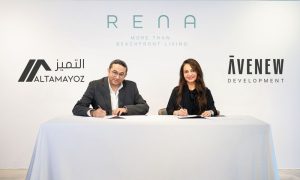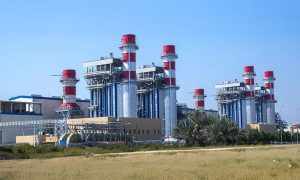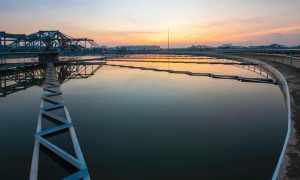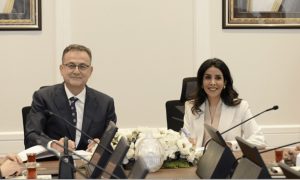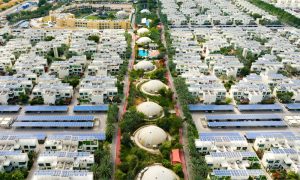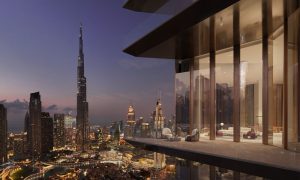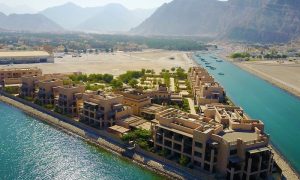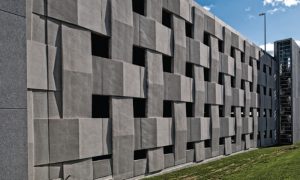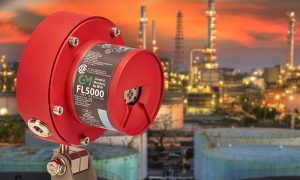GCC Power Projects
The region’s top five power projects.

With an estimated US $1.4 trillion worth of GCC power projects underway or in the pipeline, The Big Project looks at planning and funding issues surrounding developments and identifies the region’s top five projects
There are currently US $1.4 trillion worth of power projects underway or in the pipeline in the GCC and the UAE.
However, these projects are based on forecasts of a huge increase in demand for power in the region, but there is no guarantee that this demand will materialise and even if it does, projects may be left competing for a limited pool of private capital.
Demand relies on economic growth, which is currently driving the need for energy in the emirates with research agency Business Monitor International (BIM) forecasting real GDP growth averaging 3.7% per annum between 2010 and 2014.
Abu Dhabi’s population growth is also expected to drive demand, with the Abu Dhabi Water and Electric Authority (ADWEA) fore- casting a 216% rise in energy requirements between 2010 and 2030.
“Abu Dhabi’s industrial base is a major con- sumer of electricity and with new industrial construction projects underway, this trend is set to continue as the emirate seeks to diversify its economic base towards manufacturing and petrochemicals,” BIM head of infrastructure Marina Petroleka tells The Big Project.
The emirate just procured its ninth independent power project (IPP) Shuweihat 3.
The 1600 megawatt power plant costing AED five billion ($1.2 billion) will eventually produce the cheapest electricity the emirate’s utility has secured since 1998 and supply 17.8% of current electricity demand.
A consortium of Japan’s Sumitomo and Korea Electric Power Corporation (KEPCO) has been appointed to build Shuweihat 3 on the far-western coastline by 2014.
The contract confirms KEPCO’s newfound prominence in Abu Dhabi’s energy industry, after it was awarded an AED 73.4 billion (almost $20 billion) contract in December last year to build the country’s first four nuclear power stations.
The natural-gas fuelled plant will generate more power than Shuweihat 2 — ADWEA’s AED eight billion ($2.2 billion) plant that will start operations next summer — but cost 38% less, partly because Shuweihat 3 will not include an attached desalination plant.
Shuwaihat 2 is being developed on a build, own and operate (BOO) basis. The $2.8 billion project will generate 1500-megawatts of elec- tricity and desalinate 100 million gallons of water. ADWEA has a 60% stake, while Marubeni Corporation of Japan and France’s GDF Suez each have 20% interest in the project.
Strategic development
Speaking at Power Generation & Water Middle East, held last month in Abu Dhabi , Abu Dhabi National Energy Company CEO Abdulla Saif Al Nuaimi identified planning, sustainability and supply as the key issues in the development of the GCC’s power sector, paying particular attention to potential funding issues.
“With the support of Public Private Partnerships (PPPs) we are confident of achiev- ing our objectives,” he added.
But MEED’s GCC Power Market Report 2010: Keeping Pace with Demand suggested due to recent improvements in the financial markets, project finance is again becoming easier and cheaper to secure, particularly for power pro- jects backed with long-term offtake agreements. This will help projects move more easily from design to execution stage than in the past 18 months, so suppliers to the power industry can expect busier months ahead.
But Petroleka points out that Dubai is yet to procure one IPP, which she says “highlights where the centre of investments lies not just in the UAE, but also in the wider GCC”.
IPPs and IWPPs are clearly on the emirate’s agenda, however. Last month, utilities provider Dubai Electricity and Water Authority (DEWA) said it would launch the tender for the con- struction of the proposed IWPP facility in Hassyan — due for commission in 2014 — by the end of 2010, as part of its $7.6 billion invest- ment programme. The sum, which is expected to be spent over the next two years, will fund a 20% rise in power generation and a 40% rise in desalinated water by the end of 2012. The increased production is expected to meet demand until 2015.
“DEWA’s expansion strategy requires a sub- stantial amount of capital and other long-term expenditure, including those relating to the development of new generation and desalina- tion plants, the construction of additional power transmission and distribution networks, water transmission and distribution pipelines and reservoirs and other installations necessary for the operation of its business,” DEWA offi- cials said in local media reports.
The tender process was deferred in February 2009 and then amended from an engineering, procurement and construction contract (EPC) to a fully-private venture, including financing, construction, maintenance and operation.
However, BMI doubts the fundamentals sup- porting supply and demand for electricity in Dubai: “DEWA’s CEO is cited by Reuters saying that power demand in Dubai grew 6.3% in 2009 to 5622 megawatts, a far cry from DEWA’s ear- lier forecasts of 15% growth in electricity con- sumption in 2009. We believe that moderate economic activity in Dubai will also account for moderate growth in demand.”
According to BMI’s power forecasts, electric- ity output will increase, on average, by 3.6% per year between 2010 and 2019, reaching 116TWh by 2019.
“We see strong upside risks to this forecasts taking into account the investment plans in the pipeline,” observes Petroleka.
In 2009, capacity in Abu Dhabi was 10,110megawatts, by 2013 it will be 13,210 megawatts at least (based on the commission- ing of Shuweihat 2 and 3), an increase of 30%, or an average of almost 9% per annum.
Funding growth
Outside the UAE, the Gulf’s need to build new power stations remains strong.
Although the global economic recession slowed the rate at which electricity demand is growing in the GCC, consumption is still climbing significantly.
There are nine power projects in the early stages of development in the Gulf, including Kuwait and Dubai’s first independent power and water projects.
Saudi Arabia expects to see usage continue to increase by about 8% a year, while Qatar is predicting double-digit growth every year until 2013.
Jordan and Egypt are also well-advanced in planning their atomic energy programmes, and other Gulf states see nuclear power as a suitable alternative to gas feedstock, which is becoming more difficult to access.
Abu Dhabi’s Shuweihat deals are likely to be the first of several nuclear contracts awarded in the Gulf and the wider Middle East in the next few years. The UAE has repeatedly expressed an interest in building more reac- tors than the four it already has on order. So the consortiums that missed out on that first nuclear deal could yet win multibillion-dollar contracts in the region.
BMI expects that foreign majors (GDF Suez, Marubeni and KEPCO, among others) will continue to sponsor the IPP and IWPP projects because they possess the “technologi- cal knowhow” and “network of financiers” to successfully procure major projects.
“However, foreign companies tend to have strategic partnerships with local engineering firms, which take on sub-contracting works for these projects. In addition, local companies also take on pure EPC contracts from the util- ities,” observes Petroleka.
Local contractors operating in the EPC sphere that have already benefited from investments in the GCC power sector include Al Jaber Engineering, Gulf Contracting, Saudi Oger, El Seif Engineering, and Al-Hassan Engineering. So long as the sector grows, there will be a plethora of opportunities for EPC works for domestic companies.
Top Five GCC IWPPs
Qatar
Ras Girtas Power & Water Plant
Actual value: uS$3.9 billion
The Ras Girtas power and water plant in Qatar’s Ras Laffan is expected to have a capacity of 2 730 MW, combined with a potable water output of 63 million gallons per day. The EPC contract went to Mitsui Corporation of Japan, which sub-contracted Hyundai, Mitsubishi Heavy Industry and France’s Sidem. The first phase was completed in June, with full project completion expected in April 2011. Ras Girtas Company for Power is a joint venture between Qatar Petroleum (15%), Qatar Electricity and Water Company (45%), GDF Suez of France (20%), Mitsui Corporation (10%), Chubu Corporation of Japan (5%) and Shikoku Corporation of Japan (5%).
Main Contractor:
Mitsui Corporation of Japan
Abu Dhabi
Shuweihat 3 Independent Power Project
Actual value: uS$1.2 billion
The 1600 megawatt power plant costing AED five billion ($1.2 billion) will eventually produce the cheapest electricity the emirate’s utility has secured since 1998 and supply 17.8% of current electricity demand. A consortium of Japan’s Sumitomo and Korea Electric Power Corporation (KEPCO) has been appointed to build Shuweihat 3 on the far-western coastline by 2014. The natural-gas fuelled plant
will generate more power than Shuweihat 2 — ADWEA’s AED eight billion ($2.2 billion) plant that will start operations next summer — but cost 38% less, partly because Shuweihat 3 will not include a desalination plant.
Main Contractor:
Sumitomo and KEPCO
Dubai
Hassyan power and Desalination planT actual value: uS$2 billion The Dubai Electricity and Water Authority’s Hasssyan power and desalination complex is planned to be a huge plant made up of six stations (P1, P2, Q1, Q2, R1, R2) each with a gross capacity of around 1500 MW and between 100-120 million gallons per day of desalinated water. Configurations on the drawing board include gas turbines with associated heat recovery
steam generators, auxiliary boilers, backpressure steam turbines and MSF desalination units. The project will also include infrastructure for water storage and distribution. Mott Macdonald is the consultant for P1, while Lahmeyer is the consultant for P2. DEWA initially planned to build two water and power plants at the site simultaneously. In February 2009, DEWA delayed the tender for the P2 stage to September 2009.
P1 was put on hold due to the high prices of bids submitted. According to recent media reports, the tender for the construction of the proposed IWPP facility in Hassyan — due for commission in 2014 — by the end of 2010, as part of its $7.6 billion investment programme. The sum, which is expected to be spent over the next two years, will fund a 20% rise in power generation and a 40% rise in desalinated water by the end of 2012.
Main Contractor:
Mott Macdonald (P1 Stage)
Main Contractor:
Lahmeyer Intl (P2 Stage)
Kuwait
Subiya Power Plant Project
Actual value: uS$3.6 billion
The project calls for construction of 2000MW Power Plant at Subiya. The plant is a gas-fired plant.
A consortium of Al-Rashed Group for Projects Holding Co., KSCC, General Electric (GE) and Hyundai Heavy Industries was awarded the
main construction contract in August 2009. Construction is expected to be completed in 3rd quarter of 2011. The client is the Kuwait Ministry of Energy. The Kuwait-owned plant will add much-needed power to the grid, allowing Kuwait to boost electricity production to help meet growing demand. When completed, the plant will raise Kuwait’s power capacity from current levels of around
11,000 megawatts. Kuwait”s robust business and residential growth has strained the country”s power generation capability, resulting
in power outages during the hot summer months. Main Contractor: General Electric International — GE (USA)
Main Contractor:
Hyundai Heavy Industries Company
Saudi Arabia
Al-Qurayyah Power Plant
Actual value: uS$1.8 billion
State-controlled Saudi Electricity Company has set February 28 as a deadline for companies to bid for the gas-fired al-Qurayyah power plant, according to a report by Reuters. Al-Qurayyah, south of the eastern city of Khobar, would have a power generation capacity in the range of 1800 to 2100 megawatts, and is estimated to cost $1.8 billion, said Amer al-Swaha, who is head of Independent Power Projects (IPP) at the firm.
The plant is the third of six planned IPP projects, which involve the private sector, that would add around 11,000 megawatts of capacity. Saudi Electricity will buy all the power produced by the plant from the winning consortium, which will run it on a build-own-operate basis. “We have completed the pre- qualification process of 14 bidders and issued the request for proposals on Wednesday,” Swaha said.
“It is expected to be fully operational on June 1, 2014 … August 31, 2011 (is) the financial close,” Swaha told the news agency last month.
